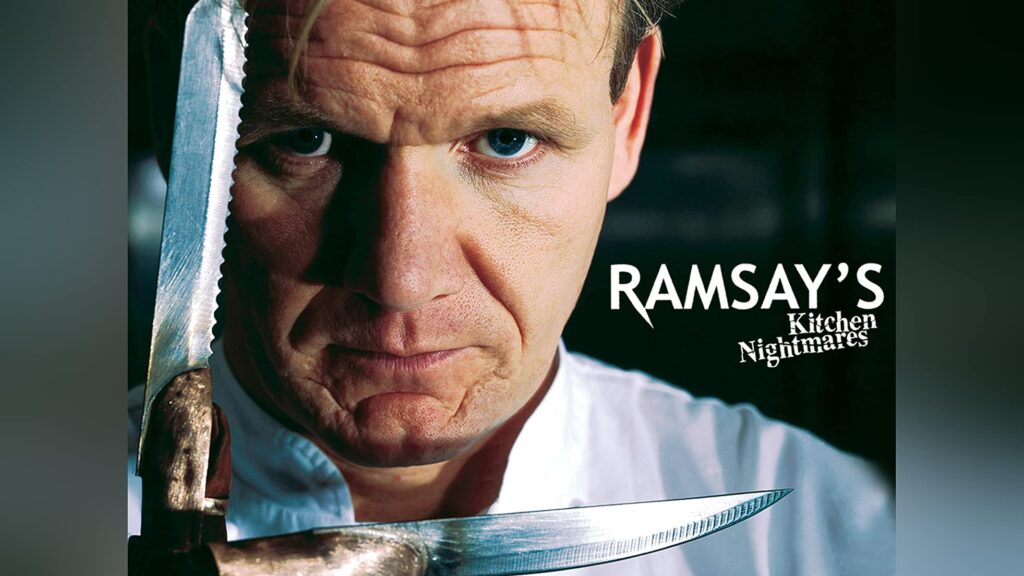“Ruby Tates” – Ramsay’s Kitchen Nightmares

Episode: Ruby Tates
Show: Ramsay’s Kitchen Nightmares
Season: 5
“Ramsay’s Kitchen Nightmares” has long been a staple of reality television, offering audiences a blend of culinary insights, interpersonal drama, and transformative narratives. The episode centered on “Ruby Tates” is no exception. It provides an intriguing look into the struggles of a restaurant trying to find its footing and an owner grappling with the demands of the culinary world.
The seaside town of Brighton is where “Ruby Tates” calls home, ideally positioned to make the most of fresh, local seafood. The locale sets the stage for a seafood haven, but as viewers quickly realize, there’s a chasm between potential and reality.
The episode begins with the charismatic and often combustible Chef Gordon Ramsay arriving at the restaurant. First impressions are critical, and Ramsay’s introduction to “Ruby Tates” leaves much to be desired. From the generic, slightly outdated decor to the convoluted menu, Ramsay immediately zeroes in on the restaurant’s identity crisis. It’s evident that “Ruby Tates” is trying to be too many things at once, leading to a dilution of what could be its core strength – seafood.
Owner Alan Love is a former actor, and his theatrical background becomes evident throughout the episode. At times, he appears more engrossed in the performance of running a restaurant than the gritty behind-the-scenes realities. There’s a genuine passion in Alan, but it’s clouded by denial and defensiveness. Ramsay’s initial feedback, as direct and harsh as ever, is met with resistance. The tension between Ramsay’s candid observations and Alan’s reticence to accept criticism becomes a recurring theme, setting up a captivating push-and-pull dynamic.
One of the episode’s most memorable moments happens during the dinner service, where Ramsay witnesses the operational chaos firsthand. Service is disjointed, dishes are returned, and the kitchen appears overwhelmed. The communication breakdown between Alan and his staff, especially head chef Lee, is palpable. Ramsay’s frustration peaks as he witnesses dish after dish being poorly executed, especially given the establishment’s access to high-quality seafood.
Ramsay’s interventions in “Kitchen Nightmares” often involve stripping things back to basics, and “Ruby Tates” is no exception. He recognizes the need to simplify the menu and amplify the seafood offerings, capitalizing on the restaurant’s geographical advantage. There’s a lesson here for viewers and restaurateurs alike: authenticity and simplicity often triumph over pretentious complexity.
Another critical intervention is the team-building exercise Ramsay orchestrates. Recognizing the communication chasm and the simmering resentments, Ramsay takes the staff out for a fishing trip. This segment, although a departure from the kitchen’s hustle and bustle, is pivotal. It not only reinforces the value of fresh ingredients but also serves as a bonding experience for the team, emphasizing the collaborative nature of restaurant success.
The episode’s climax, as with most “Kitchen Nightmares” episodes, is the relaunch. The refurbished interior, with its subtle nautical nods, provides a fresh, contemporary feel without being overbearing. The revised menu, with its seafood focus, resonates with patrons, and the streamlined dishes allow for more consistent execution. Observing the dinner service, the transformation is evident – not just in the food and decor, but in the team’s newfound synchronicity.
Yet, Ramsay’s visit to “Ruby Tates” isn’t just about rebranding a restaurant; it’s about rekindling an owner’s passion and redirecting it in productive avenues. By the episode’s end, viewers witness a more receptive and introspective Alan, someone who has reconnected with his love for the restaurant industry and recognizes the collaborative effort required for success.
In conclusion, the “Ruby Tates” episode encapsulates the essence of “Ramsay’s Kitchen Nightmares.” It’s a journey from disarray to redemption, interspersed with raw emotions, culinary insights, and the transformative magic Ramsay brings to struggling establishments. Beyond the surface-level drama, it offers viewers a deeper understanding of the restaurant industry’s intricacies and the relentless pursuit of culinary excellence.


